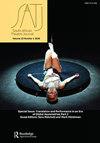Saartjie Baartman, Nelisiwe Xaba, and me: the politics of looking at South African bodies
IF 0.2
0 THEATER
引用次数: 1
Abstract
Dance Artist/Choreographer Nelisiwe Xaba’s They Look at Me and That Is All They Think (2006) ‘refers to the story of Sara[tjie] Baartman […] the “Hottentot Venus”’ (2006. 9th Jomba! Contemporary dance experience 2006 programme, p. 7) who was taken from her homeland South Africa, and exhibited in Europe in the nineteenth century. After Baartman died in 1815, her remains were displayed in a museum in Paris until 1982. Xaba parallels the story of Baartman to her own experience of performing in Europe as a black South African woman. This article considers how They Look at Me and That Is All They Think exposes the politics surrounding the act of looking at a particular racial and gendered body in both the historical and contemporary context, and how the concept and articulation of the ‘superior’ European subject was dependent on the classification of Baartman, and other black Africans, as exotic others. In my practice-based research project How I Chased a Rainbow And Bruised My Knee (2007), which was a choreographic response to Xaba’s work, I theatricalize my identity as a white South African woman to make visible whiteness, its associated privilege, and how it is dependent on the representation of a particular type of blackness.Saartjie Baartman, Nelisiwe Xaba和我:看南非尸体的政治
舞蹈艺术家/编舞Nelisiwe Xaba的《他们看着我,这就是他们所想的一切》(2006)指的是Sara[tjie] Baartman[…]“霍屯督维纳斯”(2006)的故事。9日Jomba !当代舞蹈经历2006年节目,第7页),她从她的祖国南非被带走,并在19世纪在欧洲展出。巴特曼于1815年去世后,她的遗体一直在巴黎的一家博物馆展出,直到1982年。Xaba将Baartman的故事与她自己作为一名南非黑人女性在欧洲表演的经历相提并论。本文探讨了《他们如何看待我》和《那就是他们所想的一切》揭示了围绕在历史和当代背景下看待特定种族和性别身体的行为的政治,以及“优越”欧洲主体的概念和表达是如何依赖于巴特曼和其他非洲黑人作为异域他人的分类的。在我以实践为基础的研究项目《我是如何追逐彩虹和擦伤膝盖的》(2007)中,我将自己作为南非白人女性的身份戏剧化,以使白人,与之相关的特权,以及它如何依赖于一种特定类型的黑人的表现。
本文章由计算机程序翻译,如有差异,请以英文原文为准。
求助全文
约1分钟内获得全文
求助全文

 求助内容:
求助内容: 应助结果提醒方式:
应助结果提醒方式:


